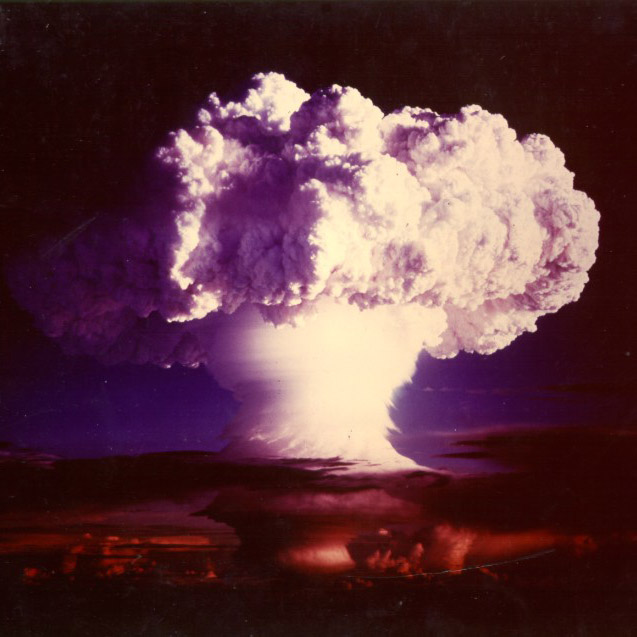Einsteinium
99
Es
Groep
n/a
Periode
7
Blok
f
Protrone
Elektrone
Neutrone
99
99
153
Algemene Eienskappe
Atoom Nommer
99
Atoommassa
[252]
Massa Nommer
252
Kategorie
Aktiniede
Kleur
n/a
Radioaktief
Ja
Named after Albert Einstein
Kristalstruktuur
n/a
Geskiendenis
Einsteinium was discovered as a component of the debris of the first hydrogen bomb explosion in 1952.
It was identified by Albert Ghiorso and co-workers at the University of California, Berkeley in collaboration with the Argonne and Los Alamos National Laboratories, in the fallout from the Ivy Mike nuclear test.
The new element was produced by the nuclear explosion in miniscule amounts by the addition of 15 neutrons to uranium-238.
It was identified by Albert Ghiorso and co-workers at the University of California, Berkeley in collaboration with the Argonne and Los Alamos National Laboratories, in the fallout from the Ivy Mike nuclear test.
The new element was produced by the nuclear explosion in miniscule amounts by the addition of 15 neutrons to uranium-238.
Elektrone per skil
2, 8, 18, 32, 29, 8, 2
Elektronkonfigurasie
[Rn] 5f11 7s2
Einsteinium is the first divalent metal in the actinide series
Fisiese Eienskappe
Fase
Soliede
Digtheid
8,84 g/cm3
Smeltpunt
1133,15 K | 860 °C | 1580 °F
Kookpunt
-
Heat of Fusion
n/a
Heat of Vaporization
n/a
Spesifieke Hitte Kapasiteit
-
Oorvloed in die aardkors
n/a
Oorvloed in die heelal
n/a

Beeld Krediete: Wikimedia Commons (National Nuclear Security Administration)
Einsteinium was first observed in the fallout from the Ivy Mike nuclear test
CAS Nommer
7429-92-7
PubChem CID Nommer
n/a
Atomiese Eienskappe
Atoom radius
-
Kovalente Radius
-
Elektronegatiewiteit
1,3 (Pauling scale)
Ionisasie potensiaal
6,42 eV
Atoom volume
28,5 cm3/mol
Termiese geleidingsvermoë
0,1 W/cm·K
Oksidasiestate
2, 3
Toepassings
Einsteinium is mainly used for scientific research purposes.
The rare isotope einsteinium-254 is favored for production of ultraheavy elements.
Einsteinium-254 was used as the calibration marker in the chemical analysis spectrometer of the Surveyor 5 lunar probe.
The rare isotope einsteinium-254 is favored for production of ultraheavy elements.
Einsteinium-254 was used as the calibration marker in the chemical analysis spectrometer of the Surveyor 5 lunar probe.
Einsteinium is harmful due to its radioactivity
Isotope
Stabiele Isotope
-Onstabiele Isotope
240Es, 241Es, 242Es, 243Es, 244Es, 245Es, 246Es, 247Es, 248Es, 249Es, 250Es, 251Es, 252Es, 253Es, 254Es, 255Es, 256Es, 257Es, 258Es